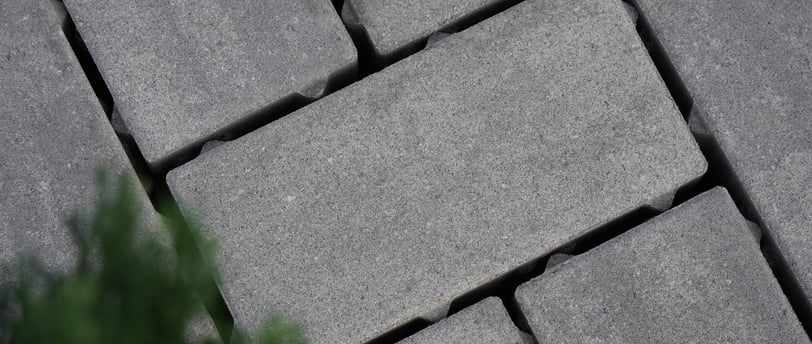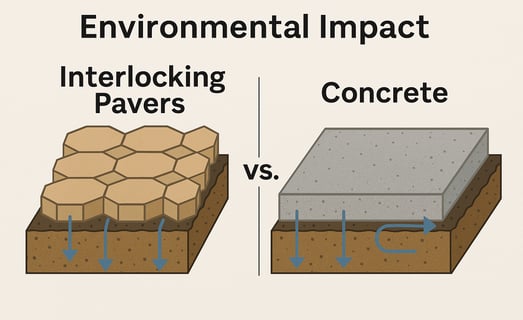The Environmental Impact of Interlocking Pavers vs. Concrete
Blog post description.
3/26/20252 min read


When choosing between interlocking pavers and concrete for driveways, walkways, or patios, many homeowners and contractors consider cost, durability, and aesthetics. However, another critical factor is the environmental impact of these materials. Let’s explore how interlocking pavers and concrete affect the environment in terms of sustainability, water management, energy consumption, and long-term ecological footprint.
1. Sustainability and Resource Use
Interlocking Pavers: Many interlocking pavers are made from natural stone or recycled materials, making them a more sustainable choice. Some manufacturers offer eco-friendly options that incorporate recycled aggregates, reducing the need for new raw materials.
Concrete: Traditional concrete production is resource-intensive, relying on cement, sand, and gravel. The cement manufacturing process, in particular, is a major contributor to carbon emissions.
2. Carbon Footprint
Interlocking Pavers: Because interlocking pavers can be produced with recycled materials and often require less energy-intensive processing, their carbon footprint can be lower than that of concrete.
Concrete: The cement industry is responsible for about 8% of global CO₂ emissions. Concrete also requires heavy machinery and energy-intensive production processes, contributing significantly to greenhouse gas emissions.
3. Water Drainage and Permeability
Interlocking Pavers: One of the biggest environmental benefits of interlocking pavers is their permeability. Water can seep between the gaps, reducing runoff and minimizing the risk of flooding. This natural drainage system helps replenish groundwater and prevents soil erosion.
Concrete: Traditional concrete is non-permeable, meaning water cannot pass through. This leads to increased runoff, which can contribute to erosion, flooding, and strain on stormwater systems. Permeable concrete options exist, but they are less common and more expensive.
4. Heat Retention and Urban Heat Island Effect
Interlocking Pavers: Lighter-colored or natural stone pavers reflect more sunlight and absorb less heat than traditional concrete. Their permeable nature also allows for better temperature regulation, reducing the urban heat island effect in cities.
Concrete: Darker and non-permeable, concrete absorbs and retains heat, contributing to higher temperatures in urban areas. This can increase energy demand for cooling and negatively impact surrounding ecosystems.
5. Longevity and Maintenance
Interlocking Pavers: Pavers are highly durable and can last decades if properly maintained. Unlike concrete, which cracks over time, individual pavers can be replaced without significant material waste.
Concrete: While concrete is also long-lasting, it is prone to cracking and requires repairs that involve heavy machinery, additional materials, and energy consumption.
Conclusion
When considering the environmental impact, interlocking pavers generally offer a more eco-friendly solution than traditional concrete. Their permeability helps manage water runoff, their manufacturing process can incorporate recycled materials, and they contribute less to urban heat retention. While concrete may have a lower upfront cost, its long-term environmental drawbacks make interlocking pavers a better choice for those prioritizing sustainability.
For homeowners and contractors looking to minimize their ecological footprint while creating durable and aesthetically pleasing outdoor spaces, interlocking pavers are a more responsible and environmentally conscious option.
For a beautiful, more eco-friendly, and low-maintenance outdoor space, interlocking pavers are the best choice.
📞 Ready to upgrade your outdoor space? Contact us today for a free consultation!


Contact Us
Quotes
contact@wyndservices.com
647.270.8131
© 2025. All rights reserved.


